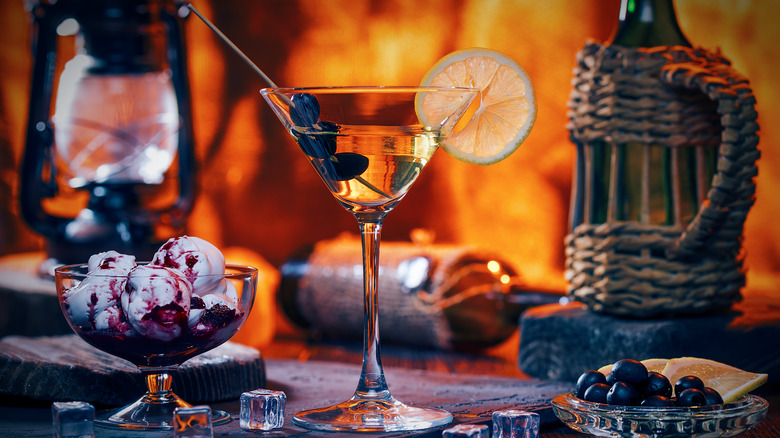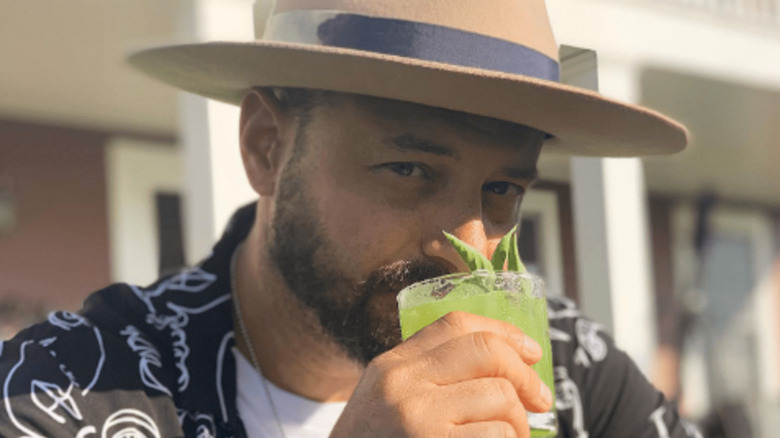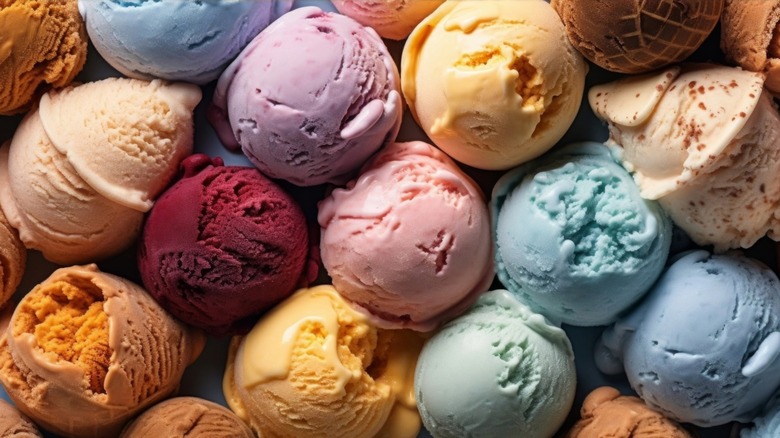Topping Your Ice Cream With A Shot Of Booze? You Need To Follow This Mixologist-Approved Tip
If you like your weekend shot of whiskey as much as you like an ice cream sundae in warm weather ... a boozy ice cream seems like the best of both worlds. Your choice of alcohol drizzled over a scoop of ice cream not only imparts the dessert with a rich taste but also kicks the complexity of the ice cream's flavor way up.
That's something Cody Goldstein, the founder of hospitality company Muddling Memories, knows very well. Muddling Memories specializes in creating unique cocktail experiences, and Goldstein is an expert when it comes to pairing spirits with sweet treats. Cody recently collaborated with Talenti to create the Talentini, a twist on a dirty martini in sundae form featuring a gin-infused honey brine, for National Gelato Day — it's a lovely example of what a boozy ice cream should be.
According to Goldstein, getting boozy ice cream right is trickier than just dribbling a tablespoon of alcohol down your dessert! In an interview with Chowhound, Goldstein explained how to keep the alcohol-topped ice cream's texture just right. If you want to spike your frozen dessert with a pour of alcohol over the top, he suggests opting for spirits that are high in sugar and low in ethanol (alcohol) content.
Picking boozes with low freezing point is key
"Some good recommendations would be fruit liqueurs, amaros, sherry, or any type of sparkling wine," Goldstein says. The reasoning behind this is simple: Their low ethanol content means they'll freeze more easily and you won't have to deal with drinks pooling at the bottom of your bowl. Plus, all the liqueurs Goldstein suggests will do an excellent job at upgrading the taste of your ice cream and complementing them, rather than overpowering the sweet flavor with the burn of alcohol. Remember, the star of the show should be the ice cream, not the booze!
If drizzling a shot of liquor on top of your scoop isn't your preferred move, you have another boozy ice cream option: Mixing the alcohol directly into the ice cream base. If you're planning on mixing the booze in, there's a common pitfall worth watching out for. "The trick with including the alcohol is that it does not freeze when the alcohol content is too high," Goldstein explains. "What you are left with is a soggy and soupy mess that does not look appealing." To avoid this, Goldstein often reaches for beer or wine instead of high-proof spirits when crafting his desserts.
Why high-proof liquors don't work
No matter how you prepare boozy ice cream — drizzling it over the top or mixing it directly into the base — the freezing point of your chosen alcohol is key. The higher the concentration of alcohol a beverage contains, the harder it is to freeze. For example, the beer and wine that Goldstein mentioned mixing into ice cream freezes at 28 degrees Fahrenheit and 23 degrees Fahrenheit, respectively. In contrast, a high-proof spirit like 50 ABV bourbon won't freeze until a frigid -25 degrees Fahrenheit — a temperature no home freezer can reach. To be clear, these stronger drinks are not impossible to work into frozen ice cream in the right hands (in fact, Goldstein likes to flavor his strawberry ice cream with bourbon.) But if you're trying your hand at making boozy ice cream for the first time, these hard liquors will give you a hard time working them in.
Instead, opt for lower ABV options like beer or wine, as Goldstein suggested. Alternatively, you can also turn to popular types of liqueurs. With an ABV typically ranging from 15% to 30%, even the booziest liqueurs (like mastiha, coconut rum, or coffee liqueur) have a freezing point of 5 degrees Fahrenheit at the lowest — well within reach of your trusty kitchen freezer.
So, the next time you're thinking of whipping up a bowl of homemade ice cream to beat the heat, keep Goldstein's expert advice in mind if you're going to spike it, too. You'll get a much more pleasant-tasting dessert as a result now that all the excess alcohol isn't forming a puddle at the bottom of the bowl!


